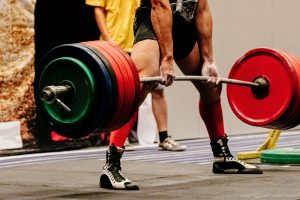Introduction
This article is written as a basic introduction to programming for powerlifting. There are many resources out there by more qualified professionals who can explain programming accurately with scientific backing. Our article does not seek to replicate such affect, but to paint the core concepts of programming for the layman. Strange analogies will be used to depict the what and how of the mystic art of programming, and as such, some nuance and detail might be lacking as a compromise. If you do not find this informative, we hope that you might at least find this amusing to read.
PSA: Medical Channel Asia (MCA) is now on Telegram! Join us here https://t.me/MedicalChannelAsia for daily reads and the latest updates at your fingertips!
What is programming? Programming as way-finding
Programming is the process of planning your training such that you achieve sustainable progress. Let’s use an analogy for programming in general: way-finding. Navigating your neighbourhood is akin to using an online program. Say you wish to get to 482 MacPherson Road, from Point A to Point B. We need to first gather information: current location, time needed for travel, mode of transport. They serve as inputs for online tools, Google Maps & Street Directory, to generate a travel plan. These tools and plans are generally reliable, frequently appraised, and get you where you need to go. They don’t emote much, and you often don’t learn how to navigate through the traffic signs or learn the roads. There’s simply no need to, given the easy online tools and the straightforward route. In powerlifting, these are your online programs. They tell you what to do from Week 1 to Week ‘X’, without teaching you how they were crafted.
After some time, you want to personalize and optimize your training – you are travelling in a foreign country. Trusty G-Maps is still there, but now you want to enjoy the sights at multiple places, and perhaps learn more about the local culture and history. The route isn’t as simple as before but there are still popular options. Call a Grab, hire a tour guide or, if you are truly blessed, have a friend who shouldered all the tickets, accommodations, packing list and itinerary. Please bow down and show that friend all the gratitude you have in your soul. Whichever options you choose, they help you navigate a foreign land, though hiccups frequently happen – miscommunication, getting scammed, or getting lost and having a good laugh after. In powerlifting, these options are your coaches. They run the gamut from the disassociated, transactional interactions of hiring a tuk-tuk, to the best memories you can have with a friend in a different land. Your coaches teach you how to navigate through training, help you through various plateaus, and encourage you through tough hurdles. At this stage of your powerlifting career, the sport is less about the destination and increasingly more about the experience.
Instead of relying on others to guide your training, you want to explore on your own. You are now that friend who tanked all the travel planning. You want to navigate on your own two feet and wits. You like organizing and hunting for the best bargains. The trips aren’t always fun, unexpected things start popping up, and sometimes you land in a country at 2am with all modes of transport shut down. But it’s all part and parcel of the experience. Nothing beats the excitement of setting out on that trip you’ve been planning for months and reaching the summit at the top. Along the way, you learn to avoid the common pitfalls. Some of your friends start asking you for tips. In powerlifting, this is akin to programming for yourself. Also, give this a read if you are wondering about the difference between programming and coaching.
So why should you care about it? Frankly, you don’t have to if you stay in one place your entire life. Programming as way-finding is a navigation tool for you to experience more sights and sounds in the sport of powerlifting. It gets you through your first plateau, your first injury. Understanding it means you can no longer use the phrases,
This perspective changes how you view training decisions and consider their effects, because it will be akin to saying that the travel plan didn’t work, isn’t necessary, or that going off the route won’t be a big deal. Sure, getting lost on a trip is part of the experience and can yield its own moments, but too many such moments will start causing unnecessary stress and snowball on the itinerary. We all know that one person who is incredibly strong without a programme, one person who gets jacked just by looking at a dumbbell. They are not exceptions to the rule, and will one day have to navigate out of a ditch too. Finally, this helps you to align your goals and training decisions. You won’t need an itinerary and packing list for the nearby pasar malam, and you won’t use Google Maps to explore the Mariana Trench, the same should apply for matching your training to your current goals and level.
Now that we have established the what through way-finding, let’s take an abrupt turn and explore the how using the analogy of essay writing, in Part 2 of this 2-part series on programming.
Further questions? Feel free to contact us at [email protected].
This article and commentary first appeared on ENSO Powerlifting, on June 8, 2020.











